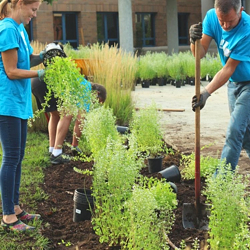

The difference between physical activity and exercise

The concepts of physical activity and exercise are often mixed. Once we have clarified what physical activity is, now is the time to understand what is different from the exercise. Exercise is a form of physical activity, which is methodical, systematic and purposeful physical activity used to improve physical training, fitness and health.

Most daily activities such as walking, vacuuming or dancing are light to moderate in intensity.
We know very well that every physical activity is good for strong general condition and well-being. The true key to health is the exercise because some of the health benefits could only be accomplished with more intense physical activity. An example is the benefits of cardio workouts.
In addition to cardiovascular benefits, intensive exercises have a salutary effect on the musculoskeletal and metabolic system of the body, stimulating their function and increasing their effectiveness.
Jumps and jogging provide greater cardiovascular benefit than walking at a leisurely pace, for instance. Here is one simple and effective 10-minutes exercise you can do any time, anywhere, daily!
Types of exercise

Experts on exercises have classified four main types of exercise: aerobic, muscle-strengthening, bone-strengthening, and stretching.
Most people tend to limit themselves to one or two types and ignore some aspects of exercise and fitness. Yes, you should choose such kind of physical activity that gives you pleasure. But, mixing them up you will increase your enjoyment as well as support your efforts.
We should all be doing aerobics, stretching, strengthening, and balance exercises.
Aerobic exercise
The word “aerobic” comes from Greek aero- “air” + bios “life” + (English) -ic and means “with oxygen”. Aerobics is a constant and sustainable exercise of a large group of muscles. Aerobics improves overall health, fat burning and cardio status of each.
Aerobic, also known as endurance exercise, is any exercise that you can perform for at least a few minutes until your heart, lungs and muscles start working extraordinarily.
Examples of aerobic exercises are running, speed walking, stair climbing, boxing, cycling, aquarobics, swimming, etc.
The common between them is the constant, rhythmic movement without a break from the beginning to the end. None of these activities requires high speed or over-stretching. All of them are slow to medium intensity, which accelerates your pulse to a healthy level. This allows the lungs to use more oxygen to optimal levels. It also constantly increases heart rate during exercise helps the strength and heart health.
Muscle-strengthening exercise
Muscle-strengthening exercise does not only serve to increase the size of the muscles and is not only practised by bodybuilders. In fact, with age, we lose muscle mass. Strength exercises build it back.
Muscle-strengthening activities make your muscles stronger and improve their endurance.
Strength training or resistance training include lifting weights, exercise with usage of own body weight or weight machines.
Strengthening your muscles relieves back and waist pain, increases bone density, assists with weight control. It also contributes to better posture and balance, reduces the risk of muscle injuries.
Bone-strengthening exercises
Bones constitute the basic structure of our body. The bone system, called skeleton, serves to support the whole body weight. It is allowing you to move and protect your vital organs behind or underneath. Considering the essential importance of your skeletal system, it is critical that you take the necessary care of it.
Weight-bearing exercise is good for your bones strengthening. These are all those exercises that you are doing on your feet, and your bones and muscles work against gravity.
Examples of bone-strengthening exercises are jumping rope, tennis, climbing stairs, dancing, etc.
Often bone-strengthening exercise is aerobic as well. It depends on the workout intensity and on whether you overuse the heart and the lungs. Running and lifting weights are obvious examples of that.
Stretching
Stretching exercise improves the strength and flexibility of people and is of utmost importance to active athletes.
Daily stretching routine helps control the process of losing muscle mass. It improves sturdiness and elasticity of ligaments. It enhances the lubrication of the joints that, with age and immobilisation, worsen their condition. Flexibility exercises when performed regularly and properly maintain healthy joints and prevent problems associated with ageing.
Stretching is an excellent way to protect yourself from muscle cramps. They can occur in both young people and adults. This problem is due to poor posture or disease, for example, arthrosis, hernia, etc.
Stretching exercises are essential for active athletes. In some sports, flexibility is the key to excellence. In general, stretching can improve sports’ performance as it stimulates joint movement and prevents possible injuries.
